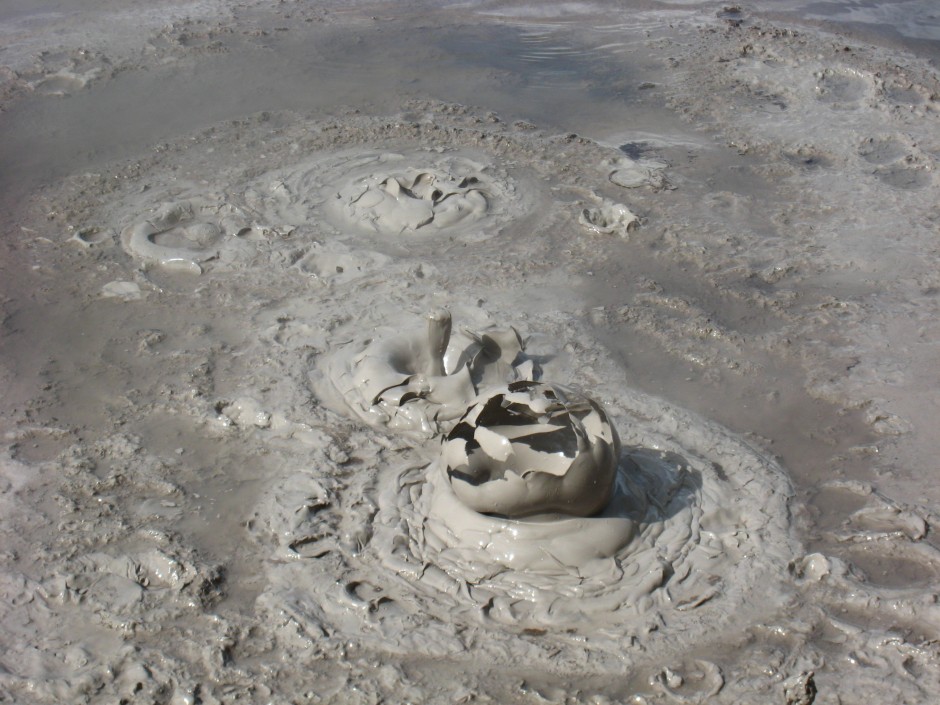
Burst by Melissa S. Bukovsky, distributed by EGU under a Creative Commons license.
This photo won 2nd Prize at the 2012 General Assembly photo competition and, according to the photographer, Melissa S. Bukovsky, epitomises the idea that an expensive camera is not a necessity for taking great photos. “You just need to know how to use what you have. I travel with a point and shoot that fits in my back pocket,” she explains.
Currently a Project Scientist at the National Center for Atmospheric Research (NCAR), Bukovsky snapped this shot on one of her many work related trips. “This picture of a bursting mud bubble in a boiling pool of mud was taken just outside of the Wai-O-Tapu geothermal area near Rotorua, New Zealand. The area is part of New Zealand’s Taupo volcanic zone. I stayed in this area for a few days of holiday before traveling back to the US after working in Melbourne for the summer. Aside from all of the fantastic geothermal phenomena to see in that area, there are numerous hot springs that are great for relaxing in.”
Mud pools, hot springs of bubbling mud, form in high-temperature geothermal areas where water is in short supply. The little water that is available rises to the surface at a spot where the soil is rich in volcanic ash, clay, and other fine particulates. The viscosity of the mud varies, from fluid during the rainy season to viscous in drier months.
The Wai-O-Tapu geothermal complex has been protected as a scenic reserve since 1931 and it remains a major tourist attraction.
Imaggeo is the online open access geosciences image repository of the European Geosciences Union. Every geoscientist who is an amateur photographer (but also other people) can submit their images to this repository. Being open access, it can be used by scientists for their presentations or publications as well as by the press. If you submit your images to imaggeo, you retain full rights of use, since they are licenced and distributed by EGU under a Creative Commons licence.
